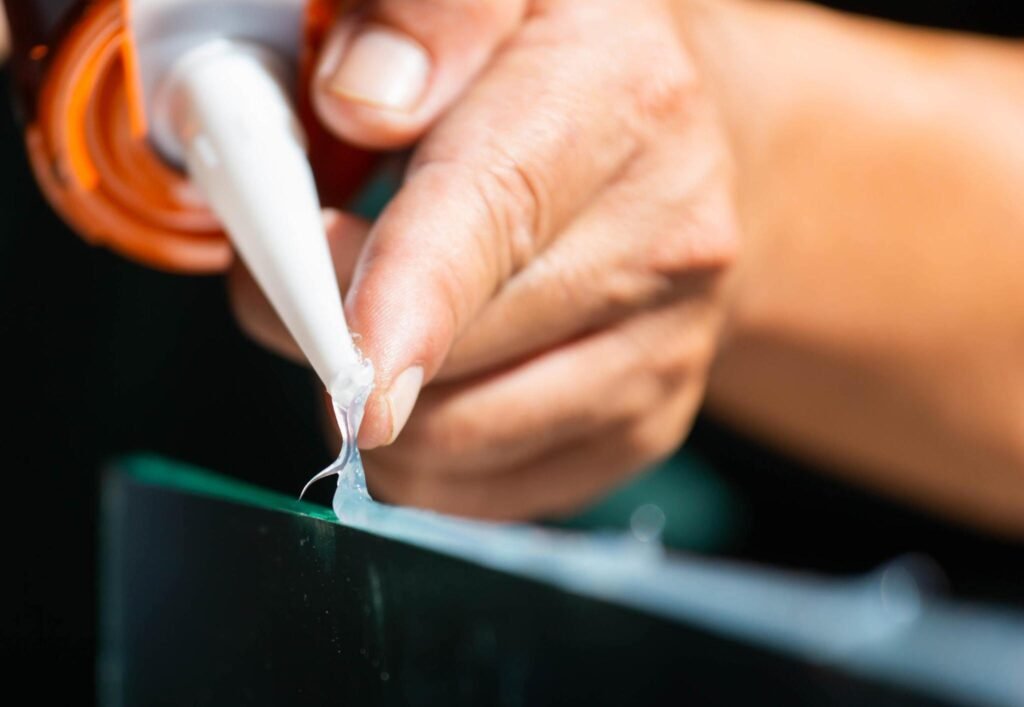
Sealants refer to materials used to block passage of air, dust, fire, smoke, light, and fluid through openings and joints in a structure. Caulks serve a similar function but are softer and more flexible. The lifespan of quality sealants and caulks depends on several factors.
The expected lifespan of silicone, polyurethane, polysulfide, and other quality sealants and caulks is 10-30 years. However, this can reduce to as low as 1-5 years due to environmental factors like moisture, UV exposure, extreme temperatures, and application errors. Using the right sealant for the job and proper preparation and application techniques can help maximize sealant lifespan.
What Can Reduce the Lifespan of Sealants?
There are several factors that can reduce the lifespan of sealants and caulks:
-
- Moisture: Constant moisture exposure causes sealant bonds to weaken over time. For example, sealants in bathrooms, kitchens, and exteriors can fail prematurely if not moisture-proof.
-
- UV Exposure: Sunlight breaks down polyurethane, silicone, and latex rapidly. Using paintable sealants and ensuring they are covered helps increase UV resistance.
-
- Extreme Temperatures: Very high and very low temperatures weaken sealant bonds. The optimal application temperature range is 40-100°F for most sealants.
-
- Surface Contaminants: Oil, dust, frost, cleaning agents can prevent proper sealant adhesion leading to early failure.
-
- Application Errors: Incorrect prep, improper tooling, insufficient curing times also reduce sealant lifespan.
What Are the Major Differences Between Sealants?
There are 9 major types of sealants and caulks, each with different compositions and best uses:
1. Urethane Sealants
Urethane sealants like polyurethane have excellent flexibility and adhesion. They are versatile for use in concrete, masonry, windows, metal, and wood with a lifespan of 10-20 years.
2. Silicone Sealants
Silicone sealants have very high UV and heat resistance with 10-30 year lifespans. Best for glass, metal, plastic, and ceramic surfaces. Not for porous surfaces.
3. Polysulfide Sealants
Polysulfide sealants excel in flexibility. Used for glass-setting and expansion joints in masonry and concrete. Last 15-20 years if surfaces are oil-free.
4. Acrylic Latex Sealants
Water-based acrylic latex sealants have good UV resistance with 5-10 year lifespan. Used primarily for interior gaps and cracks in drywall and wood.
5. Latex Sealants
Latex sealants are flexible, waterproof, and low-cost but have shorter 1-5 year lifespans. Best for interior use. Avoid exterior application.
6. Butyl Sealants
Butyl sealants are extremely moisture resistant. Provide leak-proof metal-to-metal seals lasting 10+ years. Not for expansion joints.
7. Styrene-Butadiene Caulk
Solvent-based caulk used for sealing around ceramic tiles, sinks, tubs and plumbing fixtures. Lasts 2-5 years if surfaces are cleaned well.
8. Alkyd Caulk
Alkyd resin oil-based caulk bonds well to wood and metal. Used for windows and door frames with 5-10 year lifespan. Requires alkyd primer.
9. Polycrylic Caulk
Acrylic latex caulk with silicone additives provides flexibility and good adhesion to most building materials. Lasts 4-8 years outdoors.
FAQs
What Are Some Tips for Making Sealants and Caulks Last Longer?
There are 7 tips to increase sealant and caulk lifespan:
-
- Select the right sealant type for the surfaces and environment
-
- Thoroughly clean and prepare surfaces prior to application
-
- Use consistent sealant bead thickness and tool smoothly
-
- Allow full curing time before exposing to water or loads
-
- Apply primer to porous surfaces e.g. concrete
-
- Use backer rod for joints over 1⁄4” wide
-
- Paint or cover sealants when used outdoors
What Are Some Things to Think About When Using Sealants and Caulks?
There are 5 key considerations when selecting and applying sealants:
-
- Joint movement – choose sealants with enough elasticity e.g. silicone, polyurethane
-
- Surface compatibility – oil and plasticizers can interfere with adhesion
-
- Exposure conditions – high humidity, UV, extreme temperatures affect lifespan
-
- Application requirements – easy tooling, low odor, non-staining etc. may be desired
-
- Aesthetics – smooth finish, paintable, color stability, dirt resistance
What Happens if You Don’t Seal and Caulk?
Not sealing with quality sealants leads to energy loss, moisture damage and pests:
-
- Air and water leaks causing high utility bills
-
- Growth of mold, mildew due to water ingress
-
- Infestations of insects, rodents through gaps
-
- Reduced structural integrity and weatherproofing
-
- Accelerated wear of buildings materials
What Are the Tools That Can Be Used to Apply Sealants and Caulks?
6 common tools used for sealant and caulk application are:
-
- Caulk guns for sausage packs and cartridges
-
- Sealant smoothing tools like plastic paddles
-
- Putty, drywall, mosaic knives to tool small beads
-
- Wet finger for acrylic latex caulk finishing
-
- Rags and mineral spirits for cleaning up
-
- Tape, backer rod, or bond breaker to control sealant depth
In summary, the expected lifespan of quality sealants and caulks like silicone, polyurethane, and polysulfide is 10-30 years. However, moisture, UV exposure, extreme temperatures, and application errors can reduce this to 1-5 years. Properly selecting and installing sealants is key to longevity. Checking and replacing deteriorated sealants every 5-7 years ensures structures remain sealed and protected.





